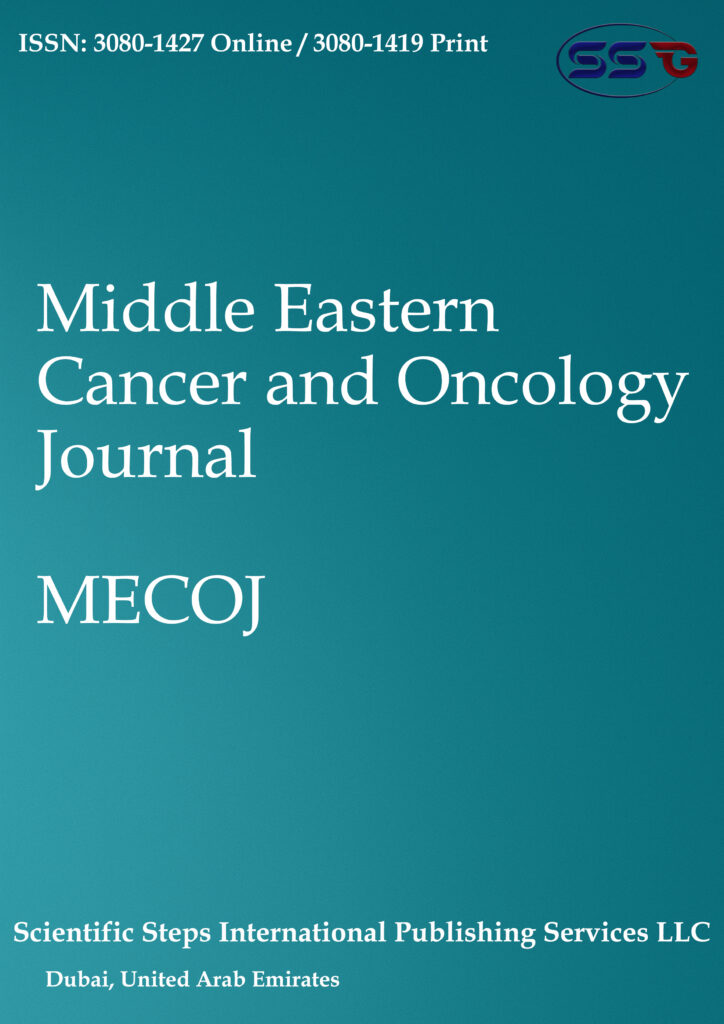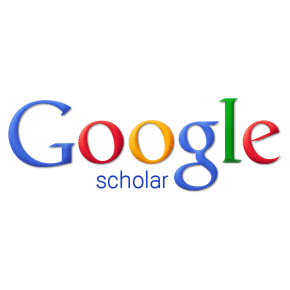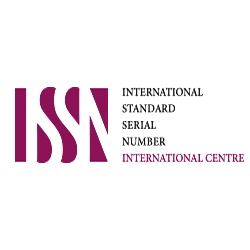About the Journal
The "Middle Eastern Cancer and Oncology Journal (MECOJ)" is an online, peer-reviewed, open access journal that strives to push the boundaries of oncology by enhancing the understanding of cancer biology, evolving treatment methods, and effective prevention strategies. It is established in 2025 by OncoEval Pioneers Group and owned and published by Scientific Steps International Publishing Services which owns the copyright and licensing for all issues and articles in the journal.
MECOJ serves as a critical platform for the swift publication of pioneering research that connects the intricate scientific findings with tangible clinical applications. The journal champions the exploration of innovative therapeutic approaches and groundbreaking genetic discoveries that redefine cancer care standards globally. Emphasizing both regional challenges in the Middle East and global advancements, the journal aims to foster collaborative insights that enhance cancer research and treatment outcomes worldwide.
The "Middle Eastern Cancer and Oncology Journal (MECOJ)" is published quarterly, providing a platform for the timely dissemination of high-quality research in the field of oncology. The journal publishes different types of articles in English, including original research articles, case reports, and review articles across all areas of oncology. This frequency allows for thorough peer review and ensures that each issue meets the journal's standards for academic excellence.
The peer-review process is designed to be efficient yet rigorous, typically taking between 30 to 60 days from submission to decision. As the journal grows and gains traction, we may consider increasing the frequency of publication based on the volume of high-quality submissions received.
The MECOJ is recognized by the Iraqi Society of Clinical Oncology (ISCO) as a co-publisher.
Aims and Scope
MECOJ welcomes a broad spectrum of contributions from the field of oncology, including but not limited to research, reviews, and clinical studies in oncology, with a focus on topics such as cancer biology, clinical treatments, genomics, translational research, public health, and innovative technologies. The scope is designed to encapsulate a comprehensive range of topics that reflect the dynamic nature of oncological research and its application, ensuring MECOJ's role as a nexus for scholarly and clinical expertise that drives significant advancements in the field.
The "Middle Eastern Cancer and Oncology Journal (MECOJ)" invites a broad range of contributions across various domains of oncology. The topics include, but are not limited to:
- Tumor Biology and Mechanisms: Deep dives into the cellular and molecular underpinnings of tumors, including their initiation, growth, spread, and the mechanisms of immune system evasion.
- Clinical Trials and Therapeutics: Reports on the design, methodology, implementation, and results of clinical trials; critical evaluations of new and existing therapeutic protocols.
- Genomic and Molecular Oncology: Cutting-edge research on genetic mutations, molecular pathways, and biomarker developments that support personalized medicine in cancer treatment.
- Innovative Treatment Strategies: Exploration of new treatment modalities including immunotherapy, targeted therapy, and advanced radiation techniques, and their clinical outcomes.
- Epidemiology and Public Health: Investigations into the epidemiological aspects of cancer, including incidence and prevalence, with an emphasis on identifying risk factors and preventive strategies influenced by regional health policies.
- Quality of Life and Palliative Care: Research focused on improving the well-being of cancer patients, encompassing advanced palliative care methods and psychosocial interventions.
- Innovative Diagnostic Technologies: Development and validation of diagnostic tools that improve early detection and diagnosis of cancer, including novel imaging technologies and molecular diagnostics.
- Assessment Tools in Oncology: Development, validation, and application of methodological instruments that assess treatment outcomes, patient satisfaction, or quality of life, providing critical insights into the efficacy of oncological interventions.
- Climate Change and Cancer: Studies on how environmental changes, particularly those driven by climate change, are impacting cancer incidence, progression, and the geographical distribution of cancer types, along with adaptations required in clinical practice to address these challenges.
- Complementary and Alternative Medicine (CAM): Explorations of non-traditional therapies and their role in cancer prevention, treatment, and survivorship care. Contributions may include studies on herbal medicines, nutritional therapies, acupuncture, and other integrative treatment approaches that have potential to complement conventional oncology practices.
Editorial Board

Dr. Bassam Abdul Rasool Hassan
Editor in Chief
PhD Clinical Pharmacy, USM, Malaysia
Al-Rafidain University, Iraq
Advisory Board
Prof. Dr. Salah Hashim Al-Zuhairy
National Center of Hematology, Mustansiriyah University, Iraq.
College of Medicine, Mustansiriyah University, Iraq.
Prof. Dr Alaa Fadhil Alwan
FICMS (int. Med) FICMS(clin.hem)
FRCP (London)
Professor of hematology
Consultant hematologist
The national center of Hematology, Mustansiriyah university, Iraq.
Prof. Dr. Hadi Skouri
Consultant Cardio-Oncology, Shiekh Shakboot Medical City, UAE.
Prof. Dr. Drira Chema
Head of Pharmacy Departement, National Marrow Bone Transplant Center of Tunisia, Ariana, Tunisia.
Analytical Chemistry Department, Faculty of Pharmacy Monastir, Monastir, Tunisia.
Dr. Musaab Kadhim
Medical Oncology Department, Alamal National Hospital for Cancer Treatment, Baghdad, Iraq.
Supervisor in the Arabic Board.
Dr. Hayder Jaber
President of Oncology Fellowship Council, Arabic Board
Director of the Middle Al Forat Center of Oncology.
Dr. Noufel Shakir
Vice President of Surgical Oncology Fellowship Council, Arabic Board
Medical City Complex, Baghdad, Iraq.
Dr. Noor Rafie
Nuclear Medicine Department, Alamal National Hospital for Cancer Treatment, Baghdad, Iraq.
Trainer in the Arabic Board.
Dr. Sabbar Shukri
Radiotherapy Department, Alamal National Hospital for Cancer Treatment, Baghdad, Iraq.
Member and Trainer in both the Iraqi and the Arabic Radiation Oncology Boards.
Dr. Haidar Kadhim
Clinical Pharmacy department, Ministry of Health, Baghdad, Iraq.
Dr. Vladimir Startsev
Professor of Oncology Department of St. Petersburg state pediatric medical university, St. Petersburg, Russia
Dr. Chema Drira
Associate Professor, Head of Pharmacy Department, National Marrow Bone Transplant Center of Tunisia, Ariana, Tunisia
Analytical Chemistry Department, Faculty of Pharmacy Monastir, Monastir, Tunisia.
Dr. Said Nabil
Tawam Hospital, Pharmacy Department, United Arab Emirates.
Dr. Zohour Anouassi
United Arab Emirates.
Dr. Muhamad Faiz Othman
Department of Pharmacy, UiTM, Malaysia.
Dr. Khalid Al-Baimani
Senior Consultant Medical Oncologist, Sultan Qaboos Comprehensive Cancer Care and Research Center, University Medical City.
Dr. Luqman Rahman Sulaiman
Assistant Professor, Consultant Oncologist, Department of Medicine, College of Medicine, Hawler Medical University.
Dr. Mazin Judy Ibrahim
Licensed Specialist Medical Oncology, Burjeel Medical City, Burjeel Cancer Institute, Al-Dhannah Hospital Abu Dhabi/ United Arab Emirates, Committee member of Iraqi Board Medical Oncology,
Assistant Professor, Medical Department, College of Medicine, University of Baghdad.
Dr. Humam Alkhaled
PharmD, Pharmacy Clinical Specialist Hematology, Bone Marrow Transplant, Georgetown University Hospital
Dr. Omar Hamdy
Lecturer of surgical oncology, Oncology Center, Mansoura University, Egypt.
Dr. Mohammad Zuhdy
Lecturer of surgical oncology, Surgical oncology department, Oncology centre, Mansoura University, Egypt.
Editorial Board Members

Dr. Juman Ali Abdulelah
PhD Clinical Pharmacy, USM, Malaysia
Swansea University, UK

Dr. Ali Qais Blebil
PhD Clinical Pharmacy, USM, Malaysia
Swansea University, UK

Dr. Muna Mojahed Barakat
PhD Physiology and Therapeutic Immunology, Queen's University Belfast, UK
Applied science private university, Jordan
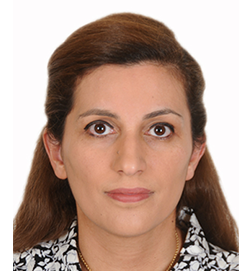
Dr. Diana Malaeb
PhD Pathology and Clinical Research, Universite Paris-Est Creteil, France
Gulf Medical University, UAE

Dr. Angelina Lim
PhD Clinical Pharmacy, Monash University, Australia.
Monash University, Australia.
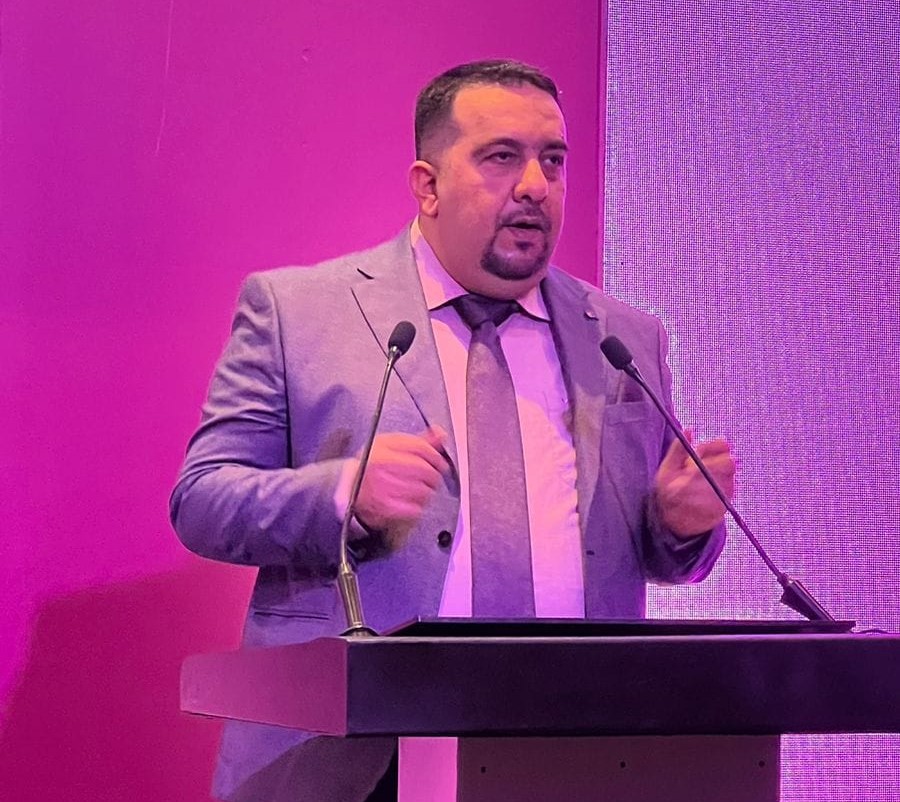
Dr. Ahmed Zuhair Abdulhameed
Medical Oncology Department, Oncology Teaching Hospital Baghdad, Iraq.

Dr. Ali Haider Mohammed
MSc Clinical Pharmacy, UiTM, Malaysia
Monash University, Malaysia
Instructions for Authors
Documents Required for Submission
When initiating a new submission through our online submission system, authors are required to upload the following documents to ensure proper processing of their manuscript:
All files must be complete and submitted in the required formats to proceed with the review process.
Submit your manuscript online through the Submission Website.
Manuscript Structure
1- The Middle Eastern Cancer and Oncology Journal (MECOJ) is an internationally recognized publication in the field of cancer and oncology. This scientific journal features peer-reviewed, open access articles and is published quarterly by SCIENTIFIC STEPS INTERNATIONAL PUBLISHING SERVICES L.L.C.
2- Determine the type of article you wish to submit:
- Research Article/Original Research: A complete description of original research findings.
- Letters/Short Reports/Communications: Brief descriptions of research findings.
- Review Article: A comprehensive summary of a topic that identifies and summarizes the results of original articles on the topic. Review articles may include, but are not limited to, scoping reviews, systematic reviews, critical reviews, literature reviews, and meta-analyses.
- Case Report: A descriptive, exploratory or explanatory analysis of a person, group, or event.
- Viewpoint/Opinion: An essay presenting an opinion on a specific topic, which may sometimes be controversial.
3- Ensure the originality of your manuscript by checking it for plagiarism using a plagiarism checker. The maximum similarity rate allowed in the Middle Eastern Cancer and Oncology Journal (MECOJ) is 20%. Additional information regarding publishing ethics, including plagiarism, can be found in the Publication Ethics.
4- Prepare your manuscript using the Microsoft Word Template.
5- Submit your manuscript online through the Submission Website. The submitting author, who is typically the corresponding author, is responsible for the manuscript during the submission and peer-review process. The submitting author must confirm that all eligible co-authors have been included in the author list and have approved the submitted version of the manuscript. All co-authors can view the manuscript details in the submission system by registering and logging in using the email address provided during manuscript submission.
6- Manuscript presentation:
- Formatting a Manuscript for Submission
- Writing Style: Manuscripts must be written in clear, concise English and should be typed using a Times New Roman font, size 12 pt. Please use 1.5 line spacing for all materials. The total length of the paper, including text, tables, and figures, should not exceed 25 pages. Tables and figures should be placed within the text.
- Formatting: Manuscripts should include line numbers and page numbers but should not include headers, footers, notes, or footnotes. The final manuscript file size should not exceed 5 MB.
- Scientific Ethics: The manuscript should follow ethical standards in scientific writing, including:
- Ensuring that all individuals who made significant contributions to the research are included as authors and those without significant contributions are excluded.
- Avoiding plagiarism by properly referencing sources and rephrasing as necessary.
- Taking caution regarding the novelty and copyrights of others.
- Manuscript Structure
- Title Page
The title page should include the following elements:
- Title: The title should be informative, meaningful, specific, and concise. It should avoid unnecessary jargon, abbreviations, and detail.
- Author Names: The full names of all authors should be provided.
- Author Affiliations: Institutional full addresses for all authors should be included.
- Corresponding Author: The name and email address of the corresponding author should be specified and marked with an asterisk (*). The corresponding author is responsible for any disputes arising from publication.
- Abstract: The abstract should be limited to 250 words and should provide an overview of the research objectives, methodology, results, and conclusions.
- Keywords: Five selective and appropriate keywords should be included for indexing purposes. Avoid uncommon abbreviations and general terms.
- Main Text
Original Investigations and Brief Reports typically comprise five sections: Introduction, Materials, Methods, Results, and Discussion.
- Introduction: The introduction section of a research work provides the necessary context by presenting comprehensive background information, explaining the motivation and objectives of the study. It should clearly outline what was done and achieved, especially in the final paragraph, which should explicitly state the research objective. This section should avoid detailed descriptions of methods, results, or conclusions, and should not include information on data collection and analysis methods or an extensive review of the field. Additionally, it should steer clear of disproportionate citations of the author's own work, the work of colleagues, or work that supports their findings while ignoring contradictory studies or work by competitors.
- Materials and Methods/Methodology: This section should provide comprehensive details to enable competent workers to replicate the experiment, specifying exact technical specifications, quantities, and sources or methods of preparation. It should describe the chronological order of the study, offering a brief yet informative account. The section must clearly explain the study process and structure, including materials used, experimental design, data recording protocols, and data analysis methods. Subheadings should be included for each category, method, procedure, study area, or analysis. Most of the section should be written in the past tense using passive voice, and results should not be included.
- Results and Discussion: This section presents the experimental data, offering the most significant insights of the paper. Results are organized in tables and figures, with each group introduced in a separate paragraph highlighting overall trends and notable data points. Key statistics, such as the number of samples (n), the index of dispersion (SEM, SD), and the index of central tendency (mean, median, or mode), are included, along with any statistical analyses and specific data like p-values. The section is concise, clearly presented, and devoid of discussion, using tables for exact values and figures for trends or relationships. Each table and figure is self-explanatory and referred to within the text without redundancy.
- Conclusion: The conclusion section should begin with a summary paragraph that encapsulates the work done in the article. This summary should provide an overview of the research, methodologies employed, and key findings. Following the summary, the conclusion should contain the main points of the article, discussing important results, applications, and developments arising from the research. This section should demonstrate whether the research objectives have been achieved.
- Acknowledgement: This section gives appreciation to individuals and organizations that provide assistance to the author. Acknowledgments to sponsors and financial support are also included in this section.
- References: All references cited in the text should be included in the References section and must be that provide context or support for the present work. At least 80% of the references should be from the past 10 years to ensure the inclusion of recent and up-to-date research. References should not be included be formatted according to the APA (7th edition) style.
For full articles, authors are required to include a minimum of 30 references, while review articles must have at least 60 references. Self-citations should not exceed 10% of the total references. There are no specific reference limits for other types of submissions, such as case studies, letters, and opinion pieces.
Examples of different reference types include:
Journal Articles
- Afrianto (2018) "Being a Professional Teacher in the Era of Industrial Revolution 4.0: Opportunities, Challenges and Strategies for Innovative Classroom Practices," English Language Teaching and Research, 2(1), 1-13.
- Albantani, A. M., & Madkur, A. (2017) "Musyahadat Al Fidyu: Youtube-Based Teaching and Learning of Arabic as Foreign Language (AFL)," Dinamika Ilmu, 17(2), 291-308.
Books
- McKibbin, B. (2007) Deep Economy: The Wealth of Communities and The Durable Future, New York: Times Book/Henry Hold and Co.
- Panitch, L., & Gindin, S. (2012) The Making of Global Capitalism: The Political Economy of American Empire, London: Verso.
Book Chapters
- Pigg, K. E., & Bradshaw, T. K. (2003) "Catalytic Community Development: A Theory of Practice for Changing Rural Society," In Challenges for Rural America in The Twenty-First Century, edited by D. L. Brown & L. E. Swanson, Pennsylvania State University Press.
Regulations and Laws
- Law Number 23 of 2011 concerning Zakat Management (2011, November 25), State Gazette of the Republic of Indonesia Year 2011 Number 115, Jakarta.
- Law Number 5 of 1984 concerning Industry (1984, June 29), State Gazette of the Republic of Indonesia Year 1984 Number 22, Jakarta.
Theses
- Choiri, A. (2021) Pemberdayaan Pemulung Melalui Pengelolaan Sampah Plastik di Medayu Utara Rungkut Surabaya [Thesis], UIN Sunan Ampel Surabaya, Surabaya.
- Erizal, Y. (2011) Analisa Pelaksanaan Kemitraan Anak Angkat Bapak Angkat (ABA) dalam Usaha Agribisnis Kelapa Sawit di PT. GMP Kec. Pasaman Kabupaten Pasaman Barat [Thesis], University if Andalas, Padang.
Internet Sources
7- Final checklist before submission
Before submitting the manuscript for publication, authors must meticulously ensure the following details are addressed:
- The title page must accurately include the full title of the paper, the names, designations, and institutional affiliations of all authors, as well as the abstract and keywords.
- The manuscript file should be prepared according to the provided instructions and must exclude the title page and any author details.
- The COPYRIGHT TRANSFER AGREEMENT (CTA) must be completed and signed by all authors.
- The Author Contribution Form (ACF) must be completed and signed by all authors.
Article Processing Charges (APC)
All articles published in The Middle Eastern Cancer and Oncology Journal (MECOJ) are published in full open access. We are pleased to announce that at present, there are No Publishing Fees for submissions. This temporary policy allows authors to publish their work free of charge.
Submitted papers should be well formatted and use good English. Authors may use SSG's English editing service prior to publication or during author revisions.
You can read more about Article Processing Charges (APC) of SSG's Journals.
Publication Ethics
Publication Ethics Statement
The Middle Eastern Cancer and Oncology Journal (MECOJ), published by SCIENTIFIC STEPS INTERNATIONAL PUBLISHING SERVICES L.L.C, is committed to upholding the highest standards of integrity and ethics in publishing. In alignment with the Committee on Publication Ethics (COPE) guidelines, our journal enforces rigorous practices to maintain the credibility and integrity of our published content.
Key Ethical Standards
Plagiarism: MECOJ uses Similarity Check to screen submitted content for originality and to detect instances of overlapping and similar text. To find out more about Similarity Check visit crossref.org/services/similarity-check/. Authors are also encouraged to review the Office of Research Integrity’s definition of self-plagiarism, which can be found at ori.hhs.gov/plagiarism-13.
We investigate all instances of alleged scientific misconduct identified in submitted manuscripts and published papers (including, but not limited to, plagiarism, manipulation, fabrication, falsification, and duplicate publication). As Committee on Publication Ethics (COPE) members, we follow the Core Practices in managing investigations of possible misconduct. Depending on the outcome of our investigation, we may reject the manuscript, publish a correction, or ask the authors to retract their paper. In instances of rejection or retraction due to misconduct, the corresponding author’s institution and funding agency will be notified, per COPE’s Core Practices. The corresponding author will be notified if MECOJ forwards any manuscript or materials to the institution or funding agency.
Reused and Redundant Publication: Submissions must be original and not previously published elsewhere. Manuscripts that contain overlapping or closely similar content to other published works without proper citation or justification are not acceptable.
Conflicts of Interest: The journal requires that all authors disclose any potential sources of conflict of interest. Any interest or relationship, financial or otherwise, that might be perceived as influencing an author's objectivity is considered a potential source of conflict of interest. These must be disclosed when directly relevant or directly related to the work that the authors describe in their manuscript. Potential sources of conflict of interest include, but are not limited to: patent or stock ownership, membership of a company board of directors, membership of an advisory board or committee for a company, and consultancy for or receipt of speaker’s fees from a company. The existence of a conflict of interest does not preclude publication. If the authors have no conflicts of interest to declare, they must also state this at submission. It is the responsibility of the corresponding author to review this policy with all authors and collectively to disclose with the submission ALL pertinent commercial and other relationships.
In the event of manuscript acceptance, each author, including the corresponding author, must complete a Conflict of Interest (COI) Disclosure questionnaire.
Please note that failure to submit COI disclosures from all authors in a timely manner may result in withdrawal of an acceptance decision.
Funding: Authors should list all funding sources in the Acknowledgments section. Authors are responsible for the accuracy of their funder designation. If in doubt, please check the Open Funder Registry for the correct nomenclature: https://www.crossref.org/services/funder-registry/.
Defamation and Freedom of Expression: While we support freedom of scholarly expression, authors should avoid making defamatory statements in submitted manuscripts.
Image Manipulation, Falsification, and Fabrication: The manipulation of images and the falsification or fabrication of data are serious ethical breaches and will lead to rejection or retraction of the manuscript.
Research Frauds and Misconduct: We are committed to investigating allegations of misconduct both before and after publication. If evidence of fraud, falsification, or plagiarism is found, appropriate action will be taken.
Transparency and Data Support: Authors should ensure that their findings are presented transparently and that their data is robust, verifiable, and based on established methods. Supporting data should be made available to the editors during the review process and, whenever possible, to the public upon publication.
Integrity of Record: The journal will publish corrections, clarifications, retractions, and apologies when needed to maintain the integrity of the academic record.
All authors are encouraged to review the COPE guidelines for a deeper understanding of ethical responsibilities in scholarly publishing. Our commitment to ethical practices ensures that MECOJ contributes valuable and trustworthy scientific knowledge to the field of oncology.
Copyright / Open Access Policy
The MECOJ journal, under Scientific Steps International Publishing Services' publication, follows an Open-Access model for articles published within it. These articles are disseminated in accordance with the Creative Commons Attribution License (CC BY). Authors retain the copyright for their published work.
Upon publication, MECOJ will include the following statement at the conclusion of the article:
Copyright: © year of publication by the authors. Licensee Scientific Steps International Publishing Services LLC, Dubai, UAE.
The article is an open access article distributed under the terms and conditions of the Creative Commons Attribution (CC BY) license (https://creativecommons.org/licenses/by/4.0/).
This note signifies that the published article is open access and governed by the CC BY license, allowing readers to access, distribute, and build upon the content while acknowledging the original authors.
Archiving Policy:
The journal ensures the long-term preservation and accessibility of its content through multiple measures:
- MECOJ uses secure digital archiving services to preserve its scholarly content (e.g., LOCKSS, CLOCKSS).
- Regular Backups: Routine backups are performed to safeguard against data loss.
- Open Access Compliance: All content remains freely accessible under the CC BY 4.0 license, ensuring continued availability to the global scholarly community.
Research Ethics
Research Involving Human Subjects:
- Declaration of Helsinki: Access the Declaration of Helsinki for guidelines on ethical research involving human subjects.
- Ethics Committee Approval: Obtaining approval from a local institutional review board (IRB) or an appropriate ethics committee is essential, with specific details required in the 'Institutional Review Board Statement'.
- Informed Consent: Participants must provide written informed consent for inclusion and publication.
- Non-interventional Studies: Full disclosure to participants regarding anonymity, research purpose, data use, and associated risks is required.
- Ethical Approval Exemption: If not required, authors should provide exemption details or cite relevant legislation.
- Protection of Patient Information: Anonymization of patient details is necessary, and authors need signed informed consent for publication of case details, personal information, or images.
- Vulnerable Groups and Categorization: Additional scrutiny may occur for studies involving vulnerable groups, and justification for categorization by race, ethnicity, gender, etc., should be explained.
Ethical Guidelines for Animal Research:
Research Involving Cell Lines:
- Cell Line Origin and Approval: Find guidance on cell line origin and approvals from institutional review boards or ethics committees through specific journals, institutions, or published papers in the field of cell biology.
Research Involving Plants:
- Compliance with Guidelines: Explore information related to plant research guidelines from institutions, national bodies, or international conventions such as the Convention on Biological Diversity and the Convention on the Trade in Endangered Species of Wild Fauna and Flora.
Clinical Trials Registration:
Dual Use Research of Concern:
- Indication and Explanation: Seek information on dual-use research concerns from sources related to biosecurity, national security, and relevant international laws or guidelines.
Sex and Gender in Research:
- SAGER Guidelines: Refer to the 'Sex and Gender Equity in Research (SAGER) guidelines' for guidance on incorporating sex and gender considerations in research.
Borders and Territories:
- Editorial Neutrality: Editorial policies of journals often reflect a neutral stance on disputes over borders and territories. These principles guide content decisions and dispute resolution processes within the journal's framework.
Editorial Policies and Ethical Considerations
Peer Review Process
The journal is committed to a rigorous peer-review process to ensure the quality and integrity of published research. Each submission will undergo thorough evaluation by experts in the field, focusing on originality, methodological soundness, and relevance to the journal's aims. Authors will receive constructive feedback aimed at enhancing their work and facilitating high standards of academic publishing.
The journal employs a double-blind review process, ensuring anonymity between authors and reviewers. Key steps in the review process include:
- Submission through the online system or directly to the editor.
- Initial compliance checks by the editorial office.
- The handling editor evaluates the suitability and academic quality of the manuscript.
- Selection of reviewers from the editorial system or based on recommendations.
- Reviewers provide feedback, leading to a decision of acceptance, revision, or rejection.
- Authors receive anonymized reviewer feedback for revisions.
Editor Responsibilities
- Selecting articles for review based on submission guidelines and legal standards.
- Consulting with reviewers and the editorial board for publication decisions.
- Ensuring that ethical and intellectual standards are upheld, free from business interference.
- Publishing necessary corrections, clarifications, or retractions.
- Maintaining confidentiality regarding submissions and peer reviews.
- Ensuring unpublished materials or ideas obtained during the review process remain confidential and not misused.
- Overseeing a fair and rigorous peer review process.
Reviewer Responsibilities
- Punctuality: Reviewers unable to meet deadlines or lacking expertise should inform the editor promptly.
- Confidentiality: Manuscripts must be treated as confidential.
- Objectivity: Reviews should be constructive and avoid personal criticism.
- Acknowledgment of Sources: Reviewers should highlight relevant uncited work and report overlaps with other publications.
- Disclosure of Conflicts: Reviewers must disclose any conflicts of interest and avoid evaluating submissions where such conflicts exist.
Conflict of Interest Policy
The editorial board directs the journal’s strategy and manages the peer review process according to the guidelines of the Committee on Publication Ethics (COPE). This includes retraction, issuing expressions of concern, and making corrections where necessary. The editorial board also monitors misconduct among reviewers and editors and addresses any ethical complaints that arise.

